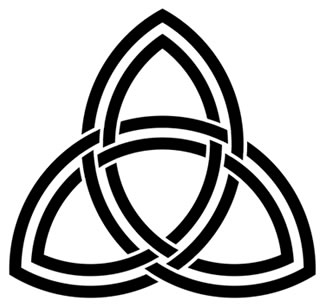Every year come March 17, people across the country dress up in green, flock to bars, and use any means at their disposal to have a good time. But how did St. Patrick’s Day come to be the all-inclusive, fun-loving festival celebrated around the globe today?
Despite being a largely cultural celebration today, St. Patrick’s Day’s origins are rooted in the history of the Catholic Church, and the man credited with spreading its influence to Ireland — Saint Patrick.
Even before he became a Catholic missionary in the fifth century, St. Patrick developed ties with the Irish early on in his life.
Highline history professor and resident Irishwoman Rachael Bledsaw said Patrick was taken from his home of Great Britain by Irish pirates and sold into slavery in Ireland at the age of 16.
“For about six years he tended to animals before escaping back to his family and joining the Church,” Bledsaw said.
When he was eventually able, Patrick returned to Ireland as a missionary to lead the push for Catholic conversion. By the end of his life, he had established himself as the Bishop of Ireland.
“His big claim to fame was the story that he removed all the snakes from Ireland,” Bledsaw said. “Except by snakes, the Church meant the Druids and the Celtic polytheistic religion that dominated [the region].”
Legend also tells that Patrick fought off a tribe of Irishmen who could transform into wolves, although Bledsaw said this claim can’t be verified.
Many St. Patrick’s Day traditions, however, can be traced back to Patrick’s influence. Bledsaw said the iconic color green came to be associated with the holiday as Catholicism’s influence throughout Ireland grew.
“Ireland made the color green its own, and green was adopted as the color of Catholicism in Ireland,” she said. “That’s why the Irish flag is green, white and orange: Green for the Catholics, orange for the Protestants, and white to symbolize peace between them.”
Also originating from Patrick’s influence and just as iconic to the holiday is the shamrock, which too has its roots in the legend of Patrick’s missionary work.
“Supposedly the story goes that St. Patrick was trying to explain the holy trinity to the Irish and they weren’t getting how you can have three gods in one,” Bledsaw said. “Patrick picked a shamrock and explained that the shamrock was one plant, but had three leaves.”
But this bit of legend, Bledsaw said, doesn’t hold much water historically.
“First and foremost, the Celts and the Irish already understood the concept of a trinity of deities,” she said. “The mother goddess of the Druid faith already had three ‘faces’ or ways she could appear: the mother, the maiden and the crone. Most Celtic gods had this feature.”

The triknot, or triquetra, a prominent symbol in pre-Catholic Irish and Celtic faith.
Not only did the Irish already understand this concept, they even had their own symbol for it, Bledsaw said. It was called the triknot, or “Trinity Knot,” and was depicted throughout Celtic and Irish faith.
“This symbol can be found all over Celtic artwork well before Catholicism was even a thing,” Bledsaw said.
As a result in large part of Patrick’s mission, Catholicism went on to become a defining part of Irish identity. For his missionary work, March 17, the day Patrick died, was established as St. Patrick’s Day.
But it wasn’t until one event in the mid-1800s that the Irish holiday would spread into international popularity.
That event, Bledsaw said, was the Irish Potato Famine. As hundreds of thousands of Irish starved and died, millions left the country, many of whom ended up in the United States.
“The Irish that left Ireland were mostly Catholic because a variety of British laws kept Catholics in a dependent and impoverished position while elevating the Irish Protestants,” Bledsaw said. “The United States was less obvious about the religious suppression, but anti-immigrant groups were also heavily anti-Catholic.
With the majority of these new Irish immigrants being confined to low-paying jobs in major cities, and facing significant prejudice, many formed their own communities where they could practice their culture together.
“In that situation, the Irish did what other groups did: celebrated together in their own communities. And because of the Irish nature, they were willing and able to share that culture,” Bledsaw said.
One such celebration came every year on March 17.
“That was how St. Patrick’s Day came to be celebrated in the U.S.: the Irish being proudly themselves in yet another place that sort-of hated them,” Bledsaw said.
With new Irish communities established throughout the U.S. and elsewhere, more and more people eventually got on board with St. Patrick’s Day celebrations, Catholic or not.
“St. Patrick’s Day is a Catholic holiday, but it is more importantly an Irish holiday, where Irish heritage and culture are celebrated,” Bledsaw said. “Because it’s a cultural holiday, groups that are not part of the culture are usually invited to celebrate too, hence phrases like ‘Everyone’s Irish on St. Patrick’s Day.’”

